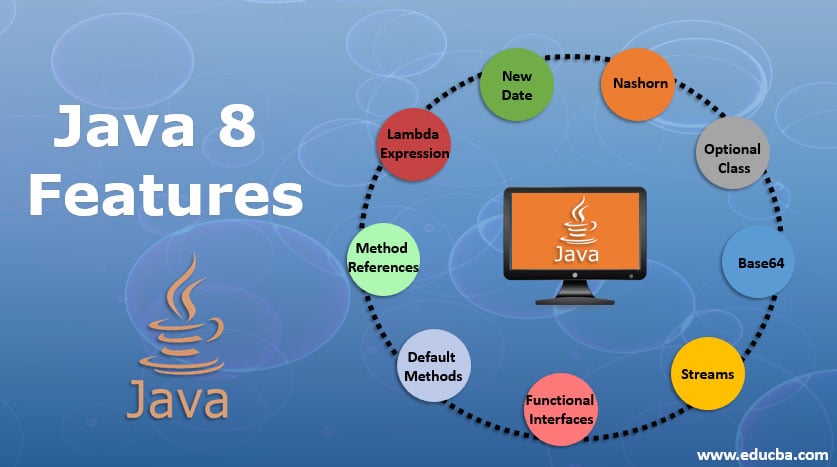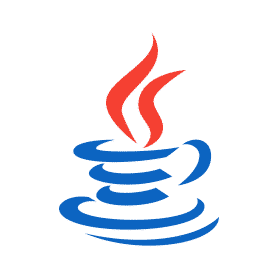Java 8
Mar 11, 2020 Java 8 introduced @FunctionalInterface, an interface that has exactly one abstract method. The compiler will treat any interfaces meeting the definition of a functional interface as a functional interface; it means the @FunctionalInterface annotation is optional. Let us see the six basic function interfaces. Java 8 Function examples.
Java 8 is the latest release for Java that contains new features, enhancements and bug fixes to improve efficiency to develop and run Java programs. The new release of Java is first made available to developers to give adequate time for testing and certification before being made available on the java.com website for end users to download. Sudo yum install java-11-openjdk-headless. For OpenJDK 8 headless run: sudo yum install java-1.8.0-openjdk-headless Install Oracle JDK on CentOS 8. When installing Oracle Java on CentOS 8, make sure to download directly from the official source, Oracle. This requires creating an account on the Oracle website. Lambda expressions are introduced in Java 8 and are touted to be the biggest feature of Java 8. Lambda expression facilitates functional programming, and simplifies the development a lot. About Java SE 8. What's New (Features and Enhancements) Commercial Features. Compatibility Guide.
- Java 8 Tutorial
- Java 8 Useful Resources
- Selected Reading
Lambda expressions are introduced in Java 8 and are touted to be the biggest feature of Java 8. Lambda expression facilitates functional programming, and simplifies the development a lot.
Syntax
A lambda expression is characterized by the following syntax.
Following are the important characteristics of a lambda expression.
Optional type declaration − No need to declare the type of a parameter. The compiler can inference the same from the value of the parameter.
Optional parenthesis around parameter − No need to declare a single parameter in parenthesis. For multiple parameters, parentheses are required.
Optional curly braces − No need to use curly braces in expression body if the body contains a single statement.
Optional return keyword − The compiler automatically returns the value if the body has a single expression to return the value. Curly braces are required to indicate that expression returns a value.
Lambda Expressions Example
Create the following Java program using any editor of your choice in, say, C:> JAVA.
Java8Tester.java
Verify the Result
Compile the class using javac compiler as follows −
Now run the Java8Tester as follows −
It should produce the following output −
Following are the important points to be considered in the above example.
Lambda expressions are used primarily to define inline implementation of a functional interface, i.e., an interface with a single method only. In the above example, we've used various types of lambda expressions to define the operation method of MathOperation interface. Then we have defined the implementation of sayMessage of GreetingService.
Lambda expression eliminates the need of anonymous class and gives a very simple yet powerful functional programming capability to Java.
Scope
Using lambda expression, you can refer to any final variable or effectively final variable (which is assigned only once). Lambda expression throws a compilation error, if a variable is assigned a value the second time.
Scope Example
Create the following Java program using any editor of your choice in, say, C:> JAVA.

Java8Tester.java
Verify the Result
Compile the class using javac compiler as follows −
Now run the Java8Tester as follows −
It should produce the following output −
If you have Java in your environment you may have already heard that in 2018, Oracle announced deep Java licensing changes to Java Standard Edition (SE) that took effect in January 2019. These changes have left the community with many unanswered questions about licensing and about their environments, not in the least of which is, “What should our Java licensing look like?” Similarly, those who have already made their decision on Java licensing are also left wondering, “Have I under or over provisioned licensing and what’s the impact if I’m not compliant?”

If you've been wondering the answer to either one of these questions, this blog post might be for you. But first, let's review, what were Oracle's Java licensing changes?
SysTrack Product Demo
Learn how complete visibility into all hardware and software in your environment helps boost productivity and lower IT costs
Watch VideoClearing up the confusion: what are the Java licensing changes?
In short, since January 2019, Oracle no longer issues public updates for commercial users of Java SE 8 which means free updates for commercial use are no more. Oracle has officially moved Java SE to a subscription-based model. Whether an organization has previously purchased a perpetual license of SE or uses OpenJDK, these licensing changes will likely impact any organization looking to keep up with support. Read more about Oracle’s support roadmap for Java SE here.
Java Platform Products | ||||
Named User Plus | Software Update License & Support | Processor License | Software Update License & Support | |
Java SE Advanced Desktop | 40 | 8.80 | - | - |
Java SE Advanced | 100 | 22.00 | 5,000 | 1,100.00 |
Java SE Suite | 300 | 66.00 | 15,000 | 3,300.00 |
Prices in US (Dollar)
Source: As dictated in Oracle’s Global Price List last updated June 19, 2018.
Perhaps the easiest way to make sense of the changes is to think of Red Hat’s open source model. Red Hat offers its software for free, but enterprise customers are sold support services and premium subscriptions. In much the same way, the changes Oracle announced mid 2018 are moving Java in that same direction. Oracle will continue to offer its OpenJDK for free, but they will start charging for enterprise support.
Home: Java Platform, Standard Edition (Java SE) 8 Release 8
So, is Java still free? It depends…
Do I need to start paying for Java licenses?
If any of the following statements apply to you, you will likely require an Oracle license:
- I use commercial features of Java SE
- I use Oracle Java SE v11 +
- I need support from Oracle
- I use Java SE versions for longer than 6 months
- I am running unsupported Java SE in my environment
If you want to use Java for free for commercial use, one way of doing it is to use an Oracle JDK, Oracle’s OpenJDK builds and OpenJDK from other providers. This, of course, does not include support from Oracle, however.
What should my Java licensing and spend look like?
In order to answer this question, you need to have the right data on your environment and determine:
- Where Java is being used and where it has been installed
- Which versions of Java exist in your environment
- What are the applications calling Java
- How many users are there by application
To help answer these questions, we have built a dashboard within SysTrack that pulls exactly this kind of data. For those unfamiliar with SysTrack, it is a solution that monitors any and everything that may be impacting end-user experience which turns out to be tens of thousands of different indicators. SysTrack gathers data on performance and usage of IT products and services and analyzes them directly from each endpoint in the environment. In the context of Java licensing changes, SysTrack data proves to be helpful because not only does it pull the Java versions in the environment and specifically which apps and users are calling it, but SysTrack also gathers and analyzes data on how virtually every IT resource and service is performing and being used, beyond Java. It can report on Office 365 licensing usage so that you can potentially scale back on E5's just as it can determine critical compute resource usage in virtual environment, like CPU and RAM. Below you will see a screenshot of the type of data SysTrack can report to help make your decision on Java licensing and spend. Request a demotoday if interested!
Jre-8u291-linux-i586.tar.gz
Alternatively, it’s important to point out Oracle has built a license tool that requires its own subscription.
What happens if I don’t purchase the subscription?
It seems the verdict is still out on how Oracle will be auditing for Java licensing and what it will mean should an organization not be compliant. However, should an organization not purchase the subscription, aside from risking non-compliance, at the very least they will be missing out on:
- early access to bug fixes
- licensing and support for cloud, server and desktop deployments
- some performance, stability, and security updates
- around the clock support
- and more (source)
Additionally, when it comes to renewal time, if an organization does not renew the subscription, they lose the rights to any commercial software downloaded during the subscription.
Digital experience monitoring software like SysTrack can help bring visibility into these critical aspects of Java licensing but also into the usage and performance of end-user technology, whether hardware or software. If you'd like to see SysTrack in action, watch this demo!
About Lakeside Software and SysTrack
Lakeside Software is a leader in digital experience monitoring. For 20 years, we have been developing software that helps IT teams have clear visibility into their environments in order to design and support productive digital workplaces. Our customers use Lakeside Software technology to perform workplace analytics, IT asset optimization, and AIOps.
SysTrack is our flagship solution. The digital experience monitoring software gathers and analyzes data on everything that may impact end-user experience and business productivity. Directly from the workspace, SysTrack captures data such as CPU, RAM, memory, and other 10,000+ data points. These are then analyzed by SysTrack and used by IT in countless ways that lower costs and optimize operations including: lowering the amount of help desk tickets, identifying over and under-provisioning, reducing time to resolution, tracking SLA performance, measuring the performance of rollouts, and so much more.